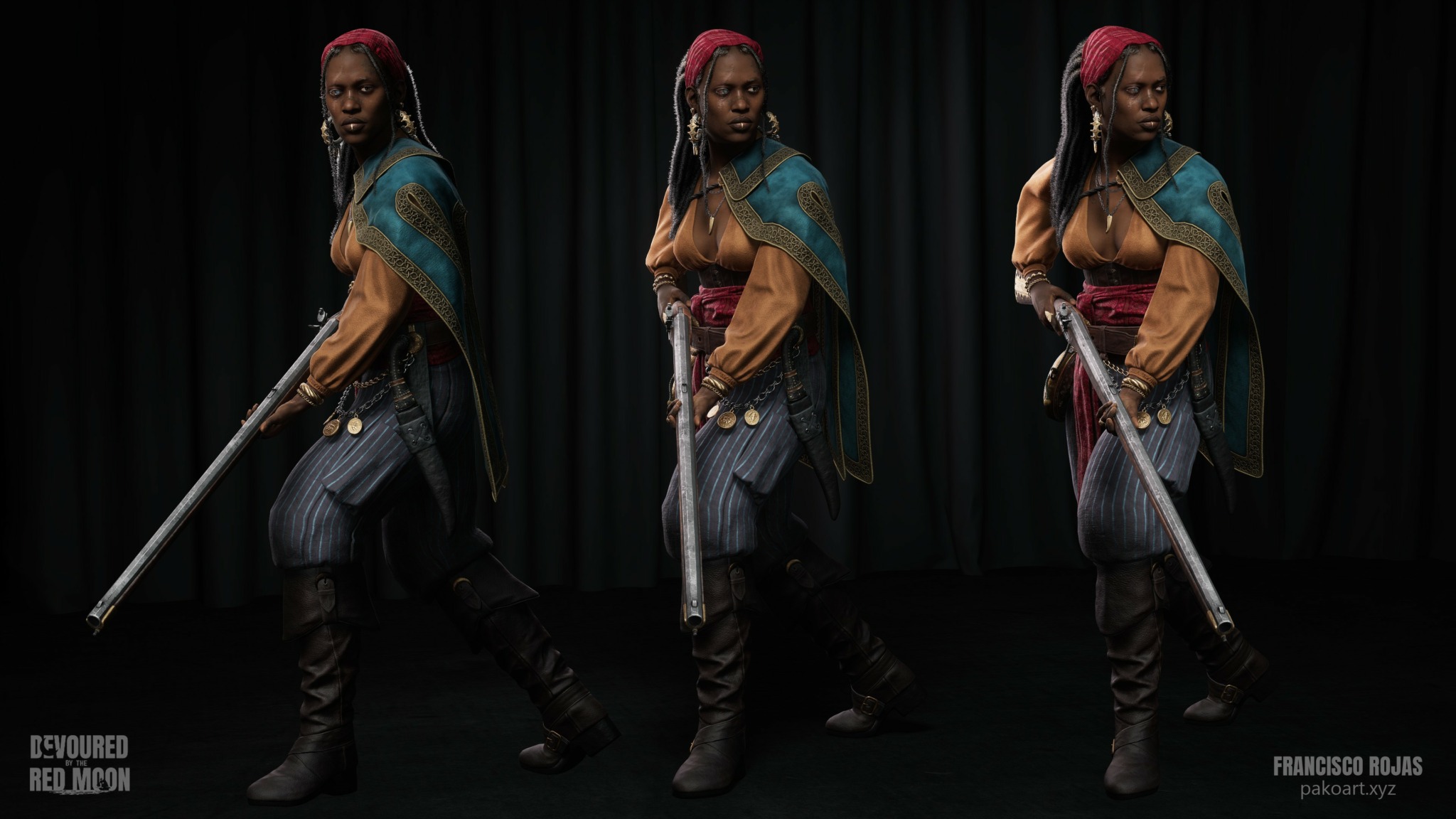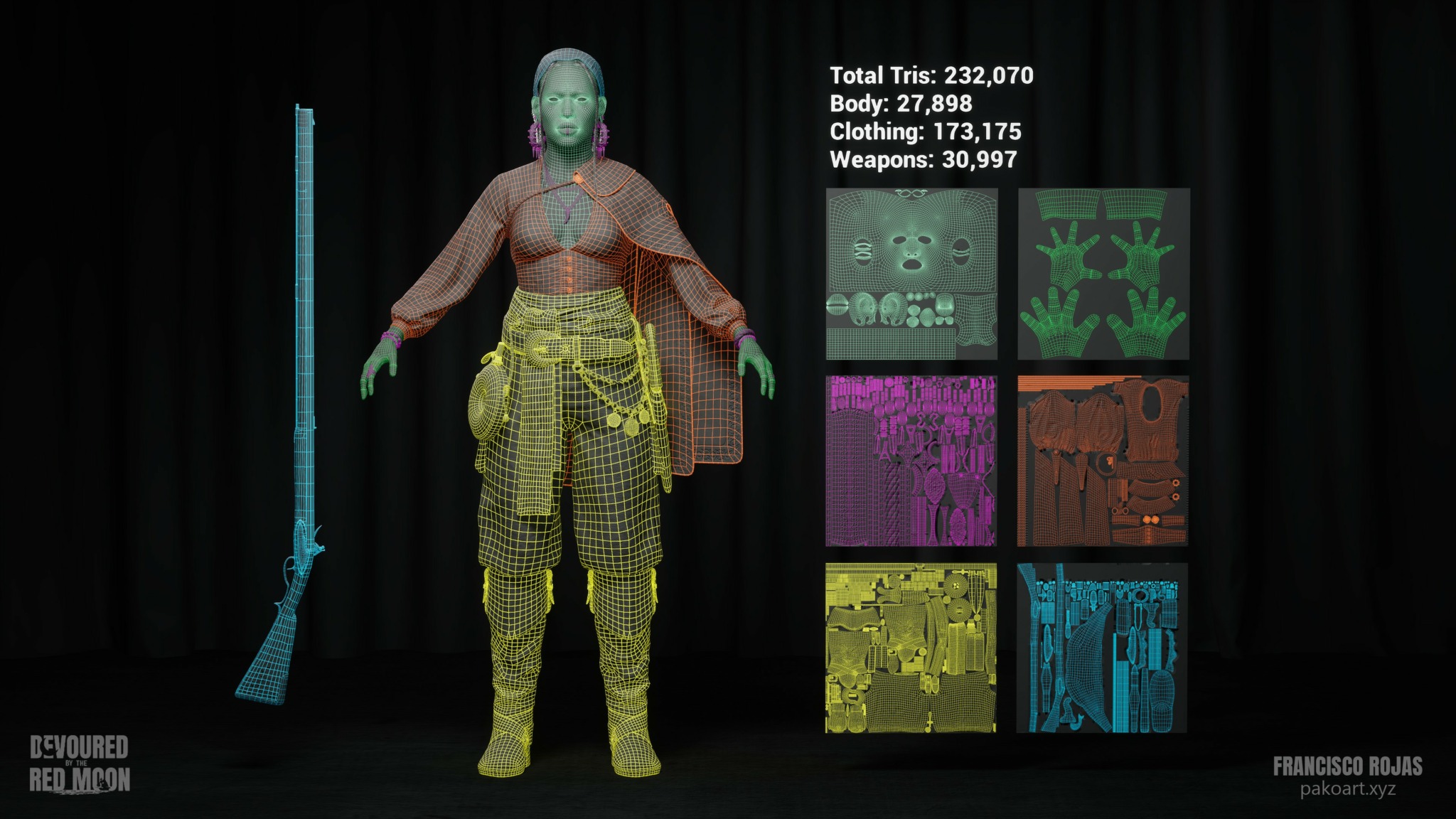We were lucky to catch up with Francisco Rojas recently and have shared our conversation below.
Francisco, thanks for taking the time to share your stories with us today Can you talk to us about how you learned to do what you do?
From a young age, I knew that I wanted to work in the creative fields; I just didn’t know where I’d fit in. When I went to school, I initially wanted to become a 3D animator; it wasn’t until I had a class with Tony Cipriano that I got more involved in learning and improving in the art of digital sculpting.
To succeed in any field, you have to fall in love with it, and that is what happened with me and sculpting. I essentially poured more hours of my time into learning how to sculpt digitally using ZBrush because that is the part of the process that I still enjoy the most. When you enjoy the process of creation, hours seem like minutes.
3D character art is such a difficult field to succeed in because of its competitiveness and difficulty to master. The only way that I have found to speed up your learning is to immerse yourself in this art. My feed on social media is full of artists, and I satisfy my curiosity by engaging in their process of creation. Your mentality has to change from getting down on yourself that you aren’t “good enough” and instead see yourself as part of the community and a fellow peer. Only then can you understand where you stand in your current skills as an artist. It’s both humbling and rewarding to see how far you’ve come and how much further you can still go.
The most essential skill is to constantly keep learning. It is a widely known saying for a reason: as an artist, you are a forever student of the craft. This applies doubly so in the field of digital art, as there doesn’t go a year, month, or week where there isn’t a new technology that changes the workflow of how you complete an artwork. The essentials are always the same, but you have to understand that software and technologies don’t stay stationary for long. My software of choice is ZBrush, and it has been for many years now. I’ve worked with it both for professional and personal projects and have taught it in schools. I’ve gotten so used to the shortcuts and hotkeys that it has become second nature. All that to say that I expect to continue utilizing this software for years to come. That doesn’t make me blind, however, to the new software coming out that specializes in the same field of digital sculpting, such as Substance 3D Modeler with its VR capabilities. I have to keep an eye on emerging technologies as an artist because they might become the industry standard tools of tomorrow.
One of the biggest obstacles that I faced and saw many of my students face is the overwhelming amount of information that you have to learn to have a base-level understanding of how we take a digital sculpture and get it inside of a video game or VFX shot. The way that I have overcome this obstacle is to have a clear idea of what I want to achieve in my project before starting it. When I started my MFA thesis project, I made a decision that they would be game-ready characters rendered inside of Unreal Engine 5. That decision dictated every other decision in my roadmap to completion. This narrowing down is not natural to artists because we want to do anything and everything, but setting a clear goal at the beginning is what will remove a lot of unnecessary headaches later down the road.


Awesome – so before we get into the rest of our questions, can you briefly introduce yourself to our readers.
My name is Francisco Rojas, I’m from Mexico City, and I specialize in 3D character art. I graduated from the Academy of Art University in San Francisco with my Master of Fine Arts degree in Animation and Visual Effects, with an emphasis on 3D modeling.
I create my own character designs and model, texture, light, and render 3D models out of them or take existing concept art and translate that into 3D. Both come with their own challenges, but I love the process of shaping digital clay and transforming it into a fully realized 3D render.
I’ve had the amazing opportunity to intern at Sony Interactive Entertainment, working with the character artist team on “MLB The Show.” I’ve freelanced as a 3D artist, working with various clients on their games, one of the most notable being “The Thrill of the Fight,” a VR boxing game where I was in charge of modeling, texturing, and optimizing the boxers to be ready for virtual reality.
I’ve instructed college-level courses at Escena, School of Animation in Mexico, teaching introductory lessons on ZBrush and Maya to students, covering the digital sculpting workflow and pipeline for creating both stylized and realistic models. While completing my Master of Fine Arts degree, I was CG Lead at the Academy’s Studio X, providing guidance on character modeling and texturing pipelines.
Throughout all my work history, I’ve always been enamored by the process of digital sculpting. So, my work history covers what I’ve worked on professionally, but in my spare time I continue to improve my skills as an artist and have gotten into 3D printing. That is one of the reasons I have kept my passion for 3D modeling, because through digital sculpture, you can branch off into many different departments, whether it’d be for video games, film, concept art, or 3D printing. There’s always something exciting to be working on!


What do you find most rewarding about being a creative?
The most rewarding aspect of being an artist is being able to gain the confidence that you can achieve the vision you have in your mind. That is what I feel separates someone from viewing art as a hobby or as a profession.
I like to believe everyone has creativity and imagination, but if you want that to become your profession, you have to hone that craft just like any other. When you’re first starting out, your art will not meet your standards, and it’s easy to get discouraged from that. However, those failures allow an artist to become a better observer. Better at lasering in on what specifically is not working and knowing how to fix it and improve upon it.
It’s definitely easier said than done, but that is what makes it so rewarding. Once you have more experience, translating your vision to reality becomes more akin to a puzzle game of gathering all the right pieces together to bring it to life. That is what we as artists are always working towards: accurately portraying our vision in our artwork.


We’d love to hear a story of resilience from your journey.
There were many moments in my journey as an artist where I considered quitting. I felt like there were barriers in front of me that were impossible to overcome. Being an international student/employee, you have to make sure your work is exceptional to be recognized in an already competitive environment. I’m no stranger to hundreds of job rejection emails, and that does hurt your ego as an artist.
I’m sure I’m not the only one who feels that way, but this phrase by Denzel Washington from his 2011 University of Pennsylvania commencement address has always stayed on my mind: “If you don’t fail, you’re not even trying.”
What I’ve learned is that failure is part of the process, not an obstacle. I have found immense comfort in that way of thinking because life is not always about your highest highs but about how you deal with your lowest lows. I attribute that mentality and my passion for this industry to being my key pillars for why I continue to pursue this path of an artist. I cannot imagine myself as happy doing anything else.
Contact Info:
- Website: https://pakoart.xyz/
- Instagram: https://www.instagram.com/pakoart.xyz
- Linkedin: https://www.linkedin.com/in/pakoartxyz/
- Twitter: https://x.com/pakoartxyz
- Youtube: https://www.youtube.com/@pakoartxyz


Image Credits
Francisco Rojas


